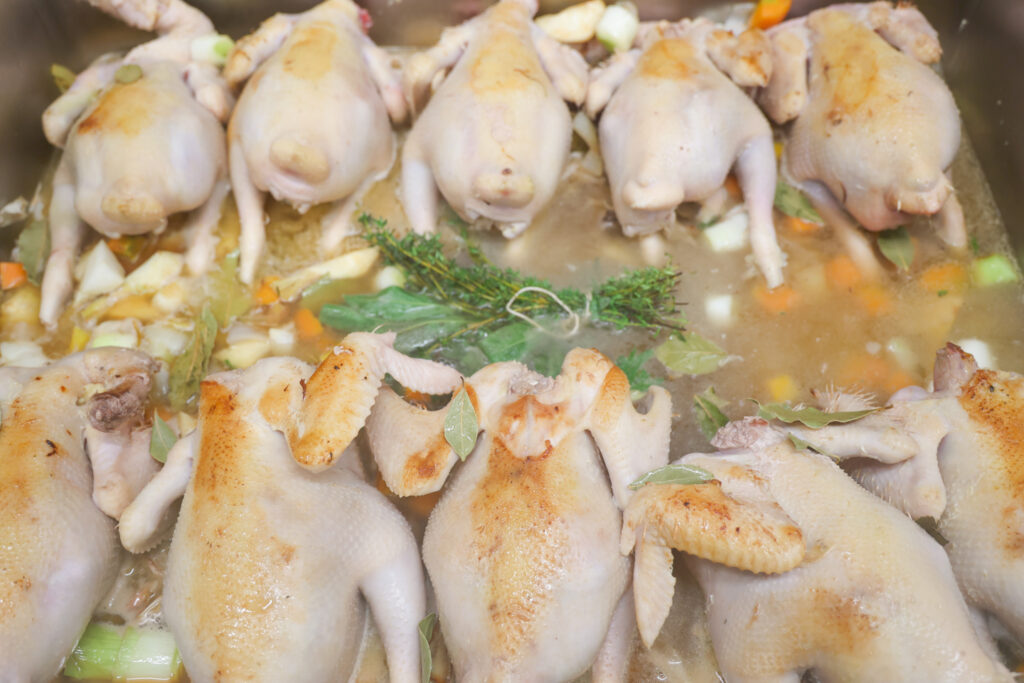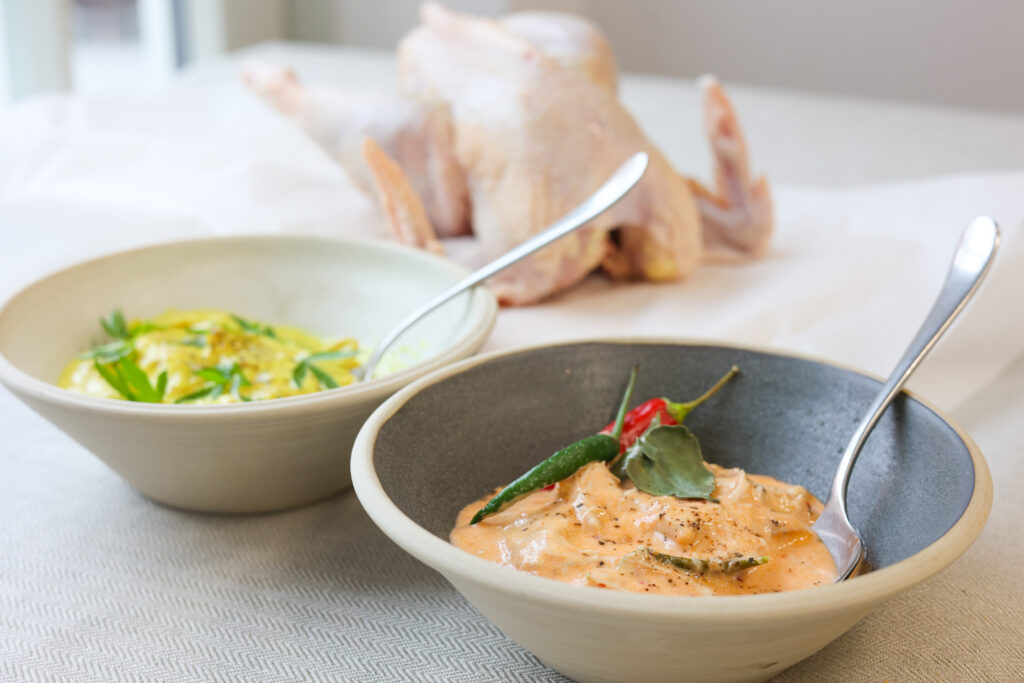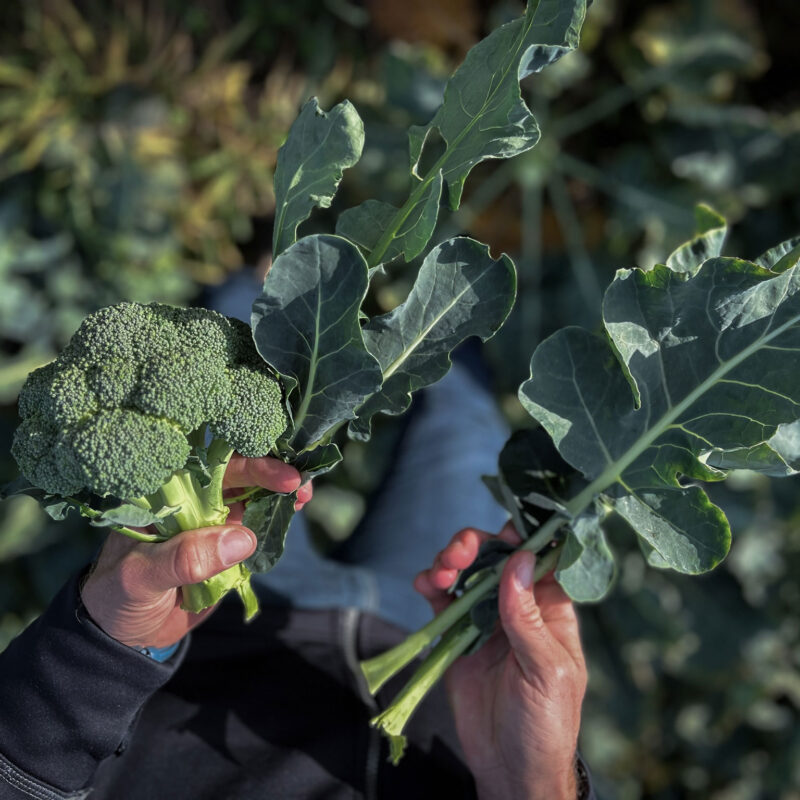Laying Hen – Aiming for the revival of a wasted resource
Spent laying hens is currently an untapped resource. Once a hen has finished laying eggs, she is not included in egg producers' certification programs and is instead considered waste, incurring a disposal cost. There is significant potential to greatly increase the use of meat from egg-laying birds and ensure that the industry takes responsibility for the entire value chain, including both eggs and spent hens.

There's a huge potential to significantly increase the use of meat from egg-laying hens and ensure that the industry takes responsibility for the entire value chain, from eggs to spent hens.
Problem
Sweden has nearly 9 million laying hens, with 5.5 million replaced yearly after 80–90 weeks of egg production. After this point, their eggs become too large or have poor shell quality, and their laying rate decreases. The hens are no longer profitable and are removed from production. Egg producers are paid for the eggs but must pay to dispose of the hens. Therefore, it can be tempting to keep the hens for a few extra weeks to get a few more eggs per hen. However, this causes the hens to become more worn out, and they are more likely to be injured during transportation to the slaughterhouse.
The entire production process needs to be strengthened
To increase the demand for hen meat in Sweden, it is essential that the animals arriving at the slaughterhouse are in good condition and that consumer confidence in hen meat is strengthened. Deviations during transportation and slaughter are a problem, and the process of slaughtering spent laying hens needs to be quality-assured. It has been found that the animal welfare deviations reported during veterinary inspections at the slaughterhouse can occur both during slaughter and in the processes of clearing out barns and transportation. Therefore, the entire production process needs to be reviewed, strengthened, and developed.
The hen products available on the market today mostly contain raw material from hens that are parent stock for broiler chickens . These hens are larger and more developed than hens from egg production. One reason why laying hens are not used as extensively today is that, compared to parent stock from broiler chicken, they contain relatively little meat, and the meat is relatively coarse and stringy. This may seem like a luxury problem, which can be easily solved with innovative product development.

In the test kitchens at Torsåker Farm, Axfoundation is exploring new tasty, nutritious, and sustainable meals with hen. The ambition is to find innovative solutions for using meat from Swedish laying hens.
Our Solution
To achieve the goal of increasing the consumption of meat from spent laying hens in Sweden, the entire value chain needs to be strengthened. Axfoundation therefore initiated a project with Stjärnägg focused on animal welfare for spent laying hens. Together with several stakeholders, Stjärnägg developed concrete routines for sustainable slaughter. Once the work on the hens themselves has been strengthened, the next step will be to strengthen the chain from the slaughterhouse to the consumer.
In our test kitchens at Torsåker Farm, Axfoundation and partners are exploring new, good, nutritious, and sustainable hen products. The focus has been on working with mechanically deboned meat, which is well-suited as an ingredient in products such as meatballs and sausages. The ambition is to find innovative solutions for using meat from Swedish laying hens.
Results
This initiative has given concrete results. Stjärnägg has developed checklists and routines for all steps prior to slaughter to strengthen egg producers’ knowledge and routines related to the hens before they leave the farm for slaughter. This program was launched by Stjärnägg in 2023 as one of the goals related to animal welfare in its first sustainability strategy. The ambition is for this standard to become industry-wide, but a larger structural change is needed to succeed fully. Stjärnägg has handed over all its work to the industry association Svenska Ägg, where the issue is now being further processed.
Axfoundation’s development work in test kitchens at Torsåker Farm has led to several products that could be taken to market, but due to ongoing infrastructural problems in the laying hen value chain, we are waiting to launch new products.























































